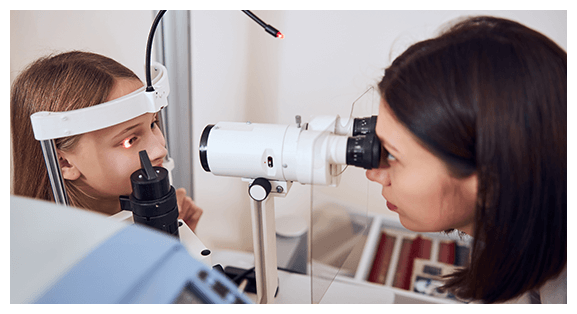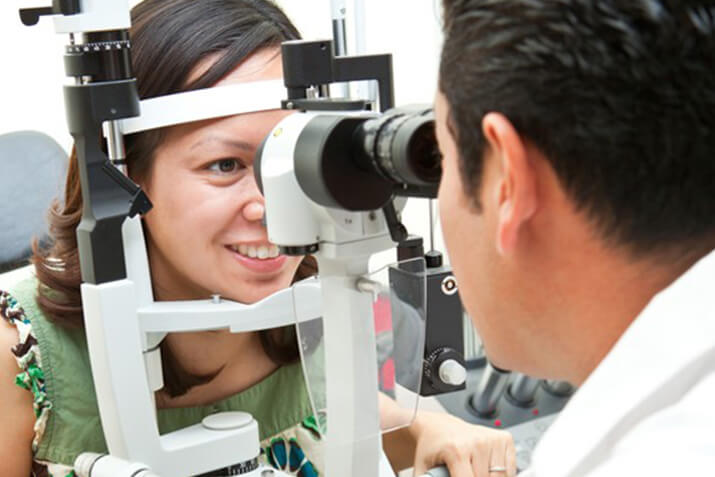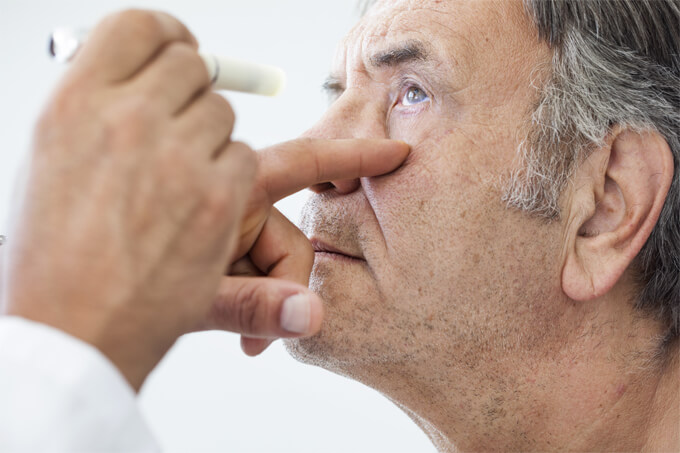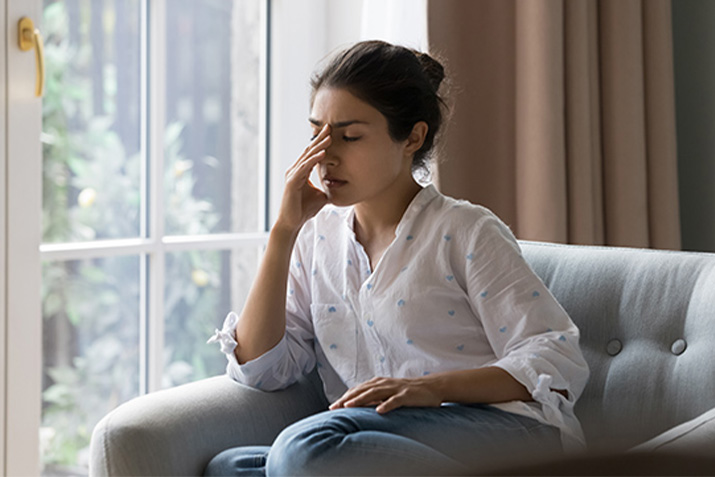
Our Optometric Centers has sought to innovate since we were founded nearly 50 years ago: we’ve evolved our technology and services, added new doctors and locations, and even changed our name, but our love for eye care remains as strong as ever. Here, offering technology-driven, personalized vision solutions isn’t just our priority — it’s our passion.

Comprehensive Eye Exams
Whether you’re visiting us for an annual, pediatric, diabetic, or contact lens exam, you can count on Our Optometric Centers to provide unmatched vision clarity and comfort. Our skilled optometrists use state-of-the-art equipment to monitor sight progression and catch even the earliest signs of eye conditions and diseases. With our technology-assisted care and our doctors’ passion for patient education, we ensure that you fully understand your exam and eye health.

Eyewear
Our eyewear collection showcases countless fashionable eyeglasses and sunglasses that let your personality shine. No matter your eyewear preferences, our friendly opticians will take the time to understand which brands, styles, and colors you’re looking for. Based on your conversations, they’ll carefully select one-of-a-kind frames that ensure you’re seeing — and looking — your best.

Dry Eye Therapy
Dry eye is a common condition that results from a lack of tears or tears that evaporate too quickly, leading to irritating symptoms like stinging, itchiness, and redness. Our doctors get to the root cause of your specific case with the modern LipiScan® device, then tailor a [dry eye therapy] plan based on your individual needs. To restore your comfortable eyesight, we provide in-office TearCare® and LipiFlow® treatments to meaningfully soothe your symptoms and directly address the underlying causes.

Myopia Control
Myopia, commonly known as nearsightedness, is caused by an elongated eyeball and makes faraway objects appear blurry. Since regular glasses and contacts only correct vision and don’t prevent myopia progression, it will continue to progress, leading to stronger prescriptions and greater risk for eye disease. To preserve your or your children’s clear eyesight for years to come, our optometrists offer myopia control options, including ortho-k and multifocal lenses, to keep myopia in check.

Eye Disease Care
Our Optometric Centers, our doctors know how important advanced detection is when it comes to protecting your sight. To find eye conditions like cataracts, diabetic eye disease, AMD, and glaucoma as soon as possible, we use the latest diagnostic technology like corneal topography and ocular coherence tomography (OCT). The sooner we uncover issues with your vision, the earlier we can manage them, helping us preserve your eye health now and down the road.
Comprehensive Eye Exams

Whether you’re visiting us for an annual, pediatric, diabetic, or contact lens exam, you can count on Our Optometric Centers to provide unmatched vision clarity and comfort. Our skilled optometrists use state-of-the-art equipment to monitor sight progression and catch even the earliest signs of eye conditions and diseases. With our technology-assisted care and our doctors’ passion for patient education, we ensure that you fully understand your exam and eye health.
Eyewear

Our eyewear collection showcases countless fashionable eyeglasses and sunglasses that let your personality shine. No matter your eyewear preferences, our friendly opticians will take the time to understand which brands, styles, and colors you’re looking for. Based on your conversations, they’ll carefully select one-of-a-kind frames that ensure you’re seeing — and looking — your best.
Dry Eye Therapy

Dry eye is a common condition that results from a lack of tears or tears that evaporate too quickly, leading to irritating symptoms like stinging, itchiness, and redness. Our doctors get to the root cause of your specific case with the modern LipiScan® device, then tailor a [dry eye therapy] plan based on your individual needs. To restore your comfortable eyesight, we provide in-office TearCare® and LipiFlow® treatments to meaningfully soothe your symptoms and directly address the underlying causes.
Myopia Control

Myopia, commonly known as nearsightedness, is caused by an elongated eyeball and makes faraway objects appear blurry. Since regular glasses and contacts only correct vision and don’t prevent myopia progression, it will continue to progress, leading to stronger prescriptions and greater risk for eye disease. To preserve your or your children’s clear eyesight for years to come, our optometrists offer myopia control options, including ortho-k and multifocal lenses, to keep myopia in check.
Eye Disease Care

At ClearView Optometric Centers, our doctors know how important advanced detection is when it comes to protecting your sight. To find eye conditions like cataracts, diabetic eye disease, AMD, and glaucoma as soon as possible, we use the latest diagnostic technology like corneal topography and ocular coherence tomography (OCT). The sooner we uncover issues with your vision, the earlier we can manage them, helping us preserve your eye health now and down the road.

Excellent Services at Every Location
- La Paz Optometric Center
- Mission Viejo Optometric Center
- North Tustin Ave Optometric Center
- Brookhurst Optometric Center
La Paz
Optometric Center
Mission Viejo
Optometric Center
27724 Santa Margarita Pkwy,
Mission Viejo, CA 92691
(949) 997-1500
North Tustin Avenue
Optometric Center
Brookhurst
Optometric Center
18449 Brookhurst Street #6
Fountain Valley, CA 92708
(714) 364-8861






